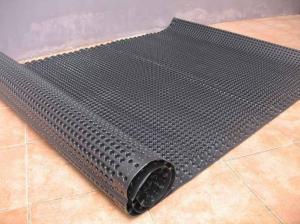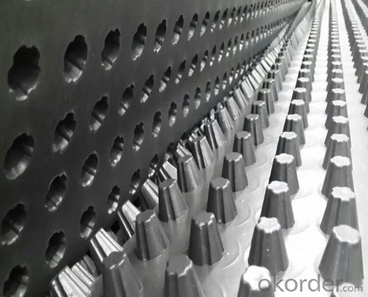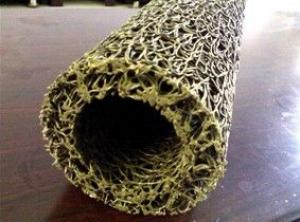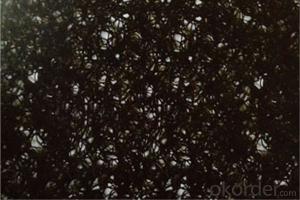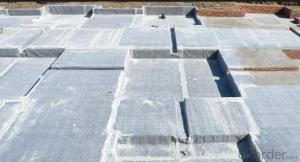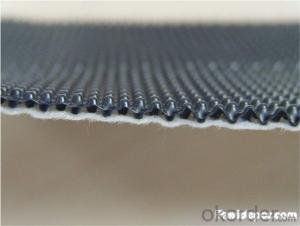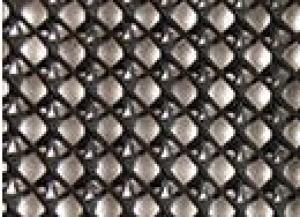HDPE Drainage Sheet Dimple Drain Board For Roof Garden
- Loading Port:
- Qingdao
- Payment Terms:
- TT or LC
- Min Order Qty:
- 10000 m²
- Supply Capability:
- 20000 m²/month
OKorder Service Pledge
OKorder Financial Service
You Might Also Like
HDPE Drainage Sheet Dimple Drain Board For Roof Garden
1. Product introduction
HDPE drainage board is designed by professional mechanical structure, the thickness of the product boss is uniform, and is accompanied
by a rib structure. It has high compressive strength, good flexibility, and non-degradation drainage. After construction through hot-melt
welding, it has uniform resistance. Plant puncture, acid and alkali resistance, and aging resistance, form an overall flexible protection for
building waterproof, so that the waterproof layer is in a closed space for a long time, and it is not easy to age. The service life of the
waterproof layer is greatly extended.
2. Specification

3. Pictures



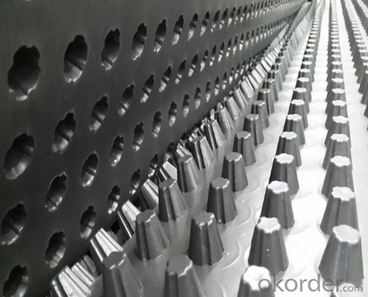
4. Features
1) Anti-rrot puncture ,resistance to acid and alkali.
2) Excellent waterproof performance
3) Product the structure and waterproof layer
4) Reduce the decibel and noise
5)Good ventilated and moistureproof performance
5. Application
1) Greening Function : roof garden ,the greening of slop roof , football field ,golf course
2) Municipal engineering : airport ,road embankment ,subway ,tunnel ,refuse landfill
3) Constructional engineering :outer and interior wall of basement ,impervious layer and thermal-protective coating of roofing
4) Water conservancy project : the impermeable of reservoir and artificial lake
5) Traffic engineering : road ,dam ,slop protection layer ,railway
6. FAQ
Q : Why choose us ?
A: We are professional manufacturer ,and we can provide the reasonable price and good service.
Q : Do you provide sample ?Is it free or extra ?
A: Yes,we can provide free sample for quality inspection.According to our company police , you should assume the freight ,and we will return the freight if you place the order.
Q : Can you tell me your main customers ?
A: That's our customers' privacy, we should protect their information.
Q : How about the delivery time ?
A: 7 days after receive the deposit or LC at sight
- Q: What are the different types of geosynthetics used in earthwork applications?
- There are several different types of geosynthetics used in earthwork applications. Some of the commonly used ones include geotextiles, geogrids, geomembranes, geocells, and geocomposites. These materials are designed to improve the stability, drainage, and performance of soil and aggregate materials in various construction and engineering projects.
- Q: How are geosynthetic clay liners used in wastewater treatment?
- Geosynthetic clay liners are used in wastewater treatment as a barrier or lining system to prevent the migration of contaminants from the wastewater into the surrounding soil or groundwater. These liners are placed in the bottom and sides of containment cells or ponds, creating a impermeable barrier that helps to contain and control the wastewater. Additionally, the clay component of these liners has the ability to adsorb and trap certain pollutants, further enhancing their effectiveness in wastewater treatment.
- Q: Can earthwork products be used for stormwater management?
- Yes, earthwork products can be used for stormwater management. Earthwork products such as retaining walls, berms, and swales can help control the flow and direction of stormwater, prevent erosion, and filter out pollutants before they reach water bodies. These products can effectively manage stormwater and contribute to improved water quality and reduced flooding risks.
- Q: What are the courses in adult education and construction engineering?
- Each school set up this course will be different departments, mainly in the professional focus, generally have the following similar courses, higher mathematics, English, painting geometry and engineering drawings, theoretical mechanics, material mechanics, structural mechanics , Civil engineering construction, concrete structure design principle, steel structure design principle, engineering structure seismic, construction regulations and contract management, construction engineering, engineering engineering, engineering survey, building construction, construction equipment, electrical engineering, soil mechanics and foundation, civil engineering construction Summary of Cost and Engineering Construction Supervision
- Q: Are earthwork products suitable for coastal protection projects?
- Yes, earthwork products are suitable for coastal protection projects. These products, such as geotextiles, geogrids, and geomembranes, are designed to enhance soil stability, prevent erosion, and provide long-term protection against coastal hazards. They can be used in various applications, including beach nourishment, dune stabilization, revetments, and seawalls, to help mitigate the impact of waves, tides, and storms on coastal areas. Earthwork products offer cost-effective and sustainable solutions for coastal protection projects, making them a suitable choice for such endeavors.
- Q: What is the difference between building materials and civil engineering materials?
- Building materials can be divided into structural materials, decorative materials and some special materials. Structural materials include wood, bamboo, stone, cement, concrete, metal, brick, ceramic, glass engineering plastics, composite materials, etc .; decorative materials, including a variety of coatings, paint, coating, veneer, colored tiles, with special effects of glass Etc .; special materials that used for waterproof, moisture, corrosion, fire, fire, noise, insulation, insulation, sealing and so on.
- Q: How are geosynthetic materials used in coastal protection structures?
- Geosynthetic materials are commonly used in coastal protection structures for various purposes. They are employed to stabilize shorelines, control erosion, and provide structural support to prevent coastal land loss. Geotextiles, for instance, are often used as an underlay for coastal revetments or seawalls, enhancing their stability and preventing soil erosion. Additionally, geotubes, which are large geosynthetic containers filled with sand, can be deployed as breakwaters or dune reinforcements, effectively absorbing wave energy and protecting vulnerable coastal areas. Overall, geosynthetic materials play a crucial role in coastal protection by providing cost-effective and sustainable solutions for shoreline stabilization and erosion control.
- Q: What are the limitations of using earthwork products in construction?
- There are several limitations of using earthwork products in construction. Firstly, the quality and suitability of earthwork products can vary significantly depending on the location and nature of the soil or rock. Different types of earth materials have different strengths and characteristics, which may not always meet the specific requirements of a construction project. Secondly, earthwork products are susceptible to environmental factors such as moisture content, temperature changes, and geological movements. These factors can affect the stability and durability of earthwork, leading to potential issues like settlement, erosion, or deformation over time. Thirdly, earthwork products often require extensive excavation, hauling, and compaction processes. This can be time-consuming, labor-intensive, and may require heavy machinery, increasing the overall cost of construction projects. Lastly, the use of earthwork products may have limitations in terms of design flexibility and aesthetic appeal compared to other construction materials. While they can be suitable for certain applications like road embankments or foundation construction, they may not be ideal for more complex or architectural projects.
- Q: Detailed classification of civil works?
- Civil engineering is generally divided into civil engineering, geotechnical professional, water supply and drainage professional. Different schools will have their own different professional classification.
- Q: How do geosynthetic clay liners work in containment projects?
- Geosynthetic clay liners (GCLs) work in containment projects by providing a barrier against fluid migration. They are composed of a layer of bentonite clay sandwiched between two geotextile layers. The bentonite clay swells when it comes into contact with water, creating a low permeability barrier that prevents the movement of liquids and gases. This property makes GCLs effective in lining landfills, ponds, and other containment structures, helping to contain and prevent the migration of potentially harmful substances.
Send your message to us
HDPE Drainage Sheet Dimple Drain Board For Roof Garden
- Loading Port:
- Qingdao
- Payment Terms:
- TT or LC
- Min Order Qty:
- 10000 m²
- Supply Capability:
- 20000 m²/month
OKorder Service Pledge
OKorder Financial Service
Similar products
Hot products
Hot Searches
Related keywords



